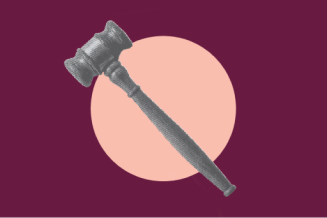How Does Someone Get 6 Months’ Probation for a Crime Carrying a 4-Year Minimum Sentence?


This blog originally appeared on The Criminal Law Practitioner.
That’s the unusual plea deal that Tadrae McKenzie struck earlier this year in a case involving a “stingray” – a controversial device being used by law enforcement around the country to track individuals’ movements and phone calls.
For more information on how these devices operate, click here.
During the course of his trial, McKenzie’s defense attorneys sought information on how exactly the police had tracked his location. When the judge took the unprecedented step of requiring state prosecutors to demonstrate exactly how a stingray (also called cell site simulators, dirtboxes, and IMSI catchers) worked, they offered McKenzie a deal he couldn’t refuse to avoid disclosing information about the device.
And the McKenzie trial isn’t the only example of the extraordinary lengths the government will go to in order to hide information about these devices from the courts.
The Department of Justice has requested that local law enforcement misleadingly refer to information collected by these devices in court filings as information from a “confidential source,” forced local agencies to sign non-disclosure agreements prohibiting them from sharing information, offered attractive plea deals in cases where defendants have challenged the use of these devices, and instructed prosecutors to dismiss cases in lieu of disclosing information.
The DOJ’s secrecy prevents judges from deciding whether these devices are being used in a way that violates the law, impedes defense attorneys’ access to information, and hinders public scrutiny.
It also helps to mask the failure of the DOJ – which has been charged with coordinating the use of these devices by law enforcement – to adopt commonsense policies to mitigate their harms. But the DOJ can and should take steps to minimize the likelihood that these devices will threaten the privacy of the public or run awry of the Constitution.
First and foremost, the DOJ should require states and localities who receive federal assistance to purchase these devices to comply with minimum privacy standards. The government doesn’t let people drive without a license. By the same token, they shouldn’t provide powerful new technologies to local law enforcement without ensuring that there are policies in place to prevent them from being used without appropriate cause or from impacting third parties.
Second, the DOJ should explicitly require a probable cause warrant prior to using a stingray or similar device. Stingrays are extremely invasive. They allow the police to gather information about an individual’s location and who they called. Some versions of the device can even sweep up the contents of their communication. Disturbingly, in some cases, it appears as if law enforcement agencies either aren’t using a warrant or are erroneously submitting pen trap and trace applications.
Third, the DOJ should put in place protections for non-targets who have their information collected. Stingrays collect the phone number and device information of everyone within range – not just law enforcement targets. The DOJ should require that all information of non-targets be immediately purged, and it should prohibit the use of non-target data in any circumstance.
Finally, DOJ should stop requesting that prosecutors and law enforcement officials mislead judges, defense attorneys, and the public about how and when these devices are used. Challenging the admission of evidence in court is a cornerstone of our criminal justice system, but right now the DOJ’s secrecy policies threaten this cornerstone.
Defendants and judges should be informed when evidence being submitted has been obtained or derived from information obtained from a stingray. And judges presented with warrant applications should be provided sufficient information about how these devices operate and the impact they will have.
Stingrays and other similar surveillance technologies were originally designed for military use, in critical circumstances. But, unfortunately, they have been put into the hands of our local police and onto the streets of our neighborhoods – with the help of the federal government.
Now information gathered from these devices is filtering its way into our courtrooms. And unless the federal government requires enhanced transparency and greater protections, we may never even know about it.


